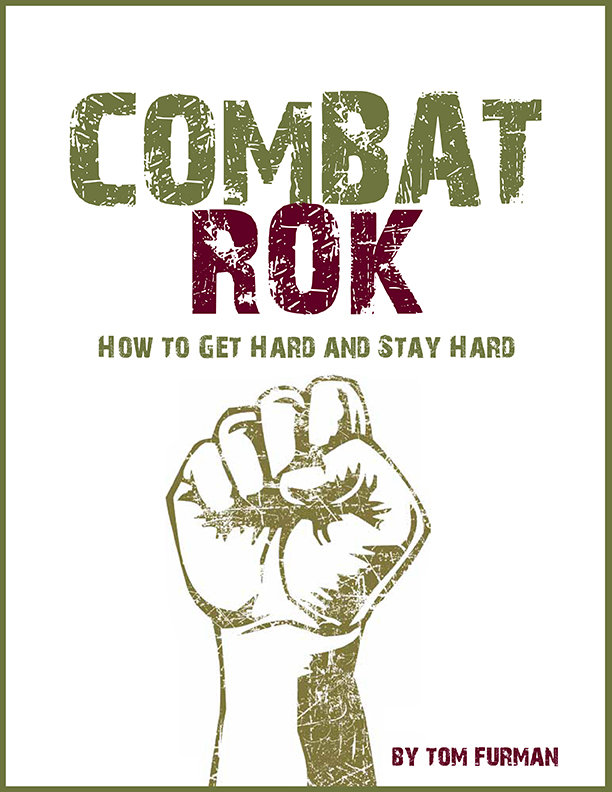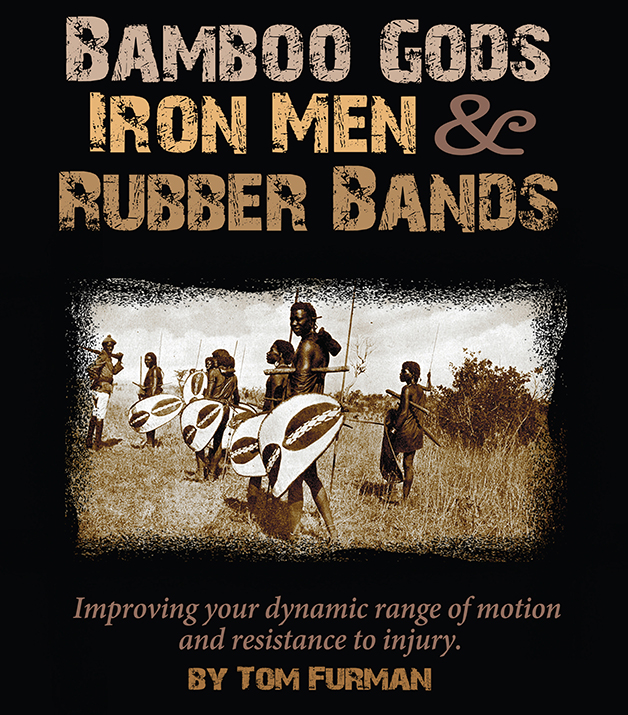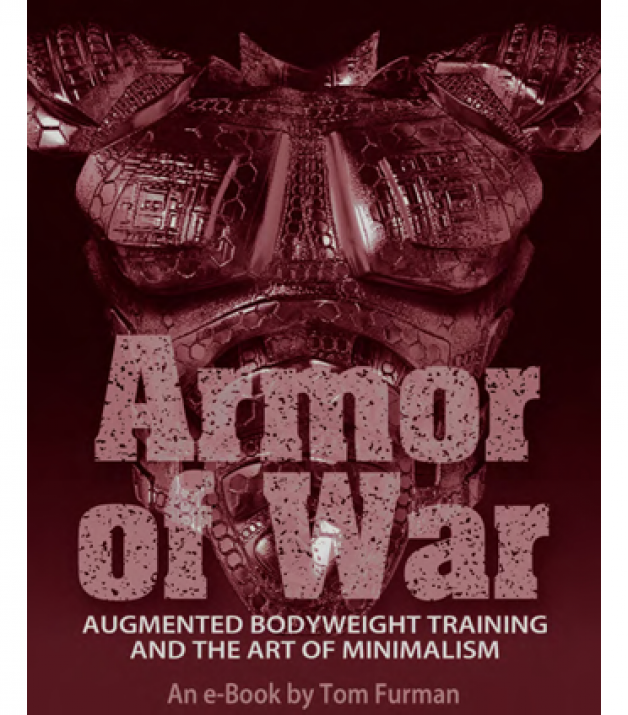 Photo is from www.Inosanto.com Silat Seminar in 2004.
Photo is from www.Inosanto.com Silat Seminar in 2004.
This interview appears on http://www.combatsystems.com.au/ which is a great website that I hope all of you visit.
Following another hugely successful Australian tour, Guru Dan Inosanto, the name associated to the legendary Bruce Lee and heir to Bruce Lees Jeet Kune Do is regarded as one of the most prominent and exceptional martial artists of our time. His relentless pursuit of knowledge and physical excellence in the combative arts have made Guru Dan the most sought after instructor in the world. The following interview was conducted by Arthur Ligopantis whilst on a two week training tour in L.A with members of the Australian Jeet Kune do Association.
Guru Dan, your renown worldwide as being a teacher of teachers. Could I start off by asking you about your first exposure to the martial arts and your motivation behind studying the arts….?
I started somewhere around… right after World War II. My Uncle Vince was a member of the first Filipino Infantry and Second Filipino Infantry and after World War II he came back and lived with the family. That’s when my first exposure came in the arts of Judo and Japanese Ju Jitsu and also what they called Okinawa Te in those days.
How many systems of martial arts have you actually studied…?
I’ve never really counted the systems and it wasn’t really important to me but I think in the Filipino Systems alone, it numbers well over thirty.
And of those arts, how many are you certified in…..?
I think out of the thirty, probably twenty. I’m talking about the Filipino Martial Arts now.
It’s well known and documented that you’re the heir to Bruce Lee’s Jeet-Kune Do. Could you tell me how you first met Bruce Lee and what impression he made on you….?
I met Bruce Lee in 1964 at the first International Karate Championships and I was given charge of him by my Instructor, Ed Parker who was in Kenpo Karate in those days and he said just to be his host and drive him around town and make sure he ate properly and made sure that he was well accommodated. I was very impressed with his philosophy and of course, obviously with his skill in the martial arts and his ability to express himself not only on the physical art but also in total philosophy at that time period.
When did you officially start studying under Bruce….?
I studied immediately after the first International Karate Championships because Bruce stayed in Los Angeles and he needed a dummy, as he was giving about four weeks of demonstrations at the Sing Le Theatre in Los Angeles. He needed someone to be the fall guy or the “ou ki” as they would say, so I became his dummy and in return for being his dummy, he started to train me.
How different was the training under Bruce compared to anything else that you’d studied in that time period….?
I think for that time period, he was way ahead of his time. I would say that he was more into the practicality of it. In the beginning he studied forms, but then went away from it. Everything was like a drill format, working on things that would develop your speed, your power, your awareness, different tactics for countering the hand attacks and the kicking attacks. So he was more into the practicality of the art.
What did the training curriculum consist of from the early 1960’s and how did it change…..?
Early 60’s, because we weren’t educated, we did a lot of really hard contact sparring and as I look back now, it wasn’t really the greatest thing. But because we didn’t really know how to train, we think we over did it on the full contact. Then later on we started to do away with all the training equipment. We were too geared up in the beginning, we had the shin guards, chest protectors, facemasks and different types of bodyguards and elbow pads. We were too bulked up and later on we stripped away the equipment and learnt how to control the sparring through light tempo contact sparring for training.
What do you think the main theme was that Bruce was trying to push…..?
I think to deal with what was reality and to train you in what he thought at that time period was the best way to get the body ready for combat or self-defence. And off course if you wanted to go into tournaments, which at that time the tournaments were all point karate, he didn’t think too highly of that. He preferred that we enter in the boxing matches because he thought there was more realism in western boxing.
Although Bruce researched many arts, he only ever taught three arts in his lifetime:
Jun Fan Gung Fu, Tao of Chinese Gung Fu and Jeet Kune Do. Could you please explain what each of those arts consisted of and how they differed…..?
They are all somewhat the same, the Jun Fan Gung Fu is in Jeet Kune Do, and in the Tao of Gung Fu, there is Jun Fan Gung Fu. It all stems from Jun Fan Gung Fu, then later on for a short period, it was called the Tao of Jun Fan Gung Fu. He later said, “that’s too many things,” so that’s when he referred to it as Jeet Kune Do. There are a lot of elements that are in all three but it is set for Jun Fan Gung Fu and it is set for what he called the Tao of Chinese Gung Fu.
It’s been said that in order to truly understand Jeet Kune Do, one must first have a solid understanding in the Jun Fan arts. What are your thoughts on this…..?
I think that’s a really good idea, that you should train in Jun Fan Gung Fu and then expand into your own Jeet Kune Do. However, I honestly believe at this time period, a person could get to his form of Jeet Kune Do by studying different arts and just evolving into some of the principles and concepts that were laid down by Bruce Lee. The term Jeet Kune Do is finding your way through the first part, which was Jun Fan Gung Fu and then expanding to find out what is your own Jeet Kune Do.
In developing Jeet Kune Do, Bruce borrowed heavily from western fencing & thought very highly about the principle of stop hitting or interception. In fact, he named his whole art after this principle. Could you tell me how he trained and developed his interception skills and what sort of drills he would teach his students…..?
The intercepting part came from his brother, Peter who was a champion of Hong Kong in the epee. Bruce Lee relayed to me that as a teenager, he wanted somebody to practice with and he couldn’t find anyone to practice, so he asked his brother Peter if he would help him out. Peter told him that he didn’t do any martial arts but he would help him out if they played a game of slap. So they decided to put their left hand behind their back and their right hand was used to slap the person, after that, his brother just really truly got the best of him which infuriated Bruce Lee, so he ran and tackled him and they started punching and wrestling on the ground. But he said from that lesson he learned the value of disengaging, how to stop hit and that came from his brother, Peter.
So he started to study fencing from I guess, various different friends and he did a lot of researching, he then incorporated the stop hitting into the Jeet Kune Do. It’s like if he side kicks, you try to counter before he initiates the attack, if he left jabs or right crosses, you try to counter before. It takes a high degree of awareness obviously and you definitely have to practice it because you can’t always do it 100%. So sometimes you have to do what he referred to as “attack by drawing” rather than stop hitting. Although you could stop hit and attack by drawing at the same time but sometimes it’s not possible, so now, we have to go straight defence before you can go into an offensive mode.
Guru Dan, you’ve been quoted as saying that “whenever Bruce was really serious about a street fight, he’d always revert back to the straight blast”. Could you tell me how important the straight blast is for the Jeet Kune Do student and its relevance to street fighting……?
At this point in my life I don’t think that’s the only thing you can do, but at that time, he thought it was very important to straight blast. What the straight blast does, is overload the computer centre, the brain and the person being hit by the straight blast can’t compute all the incoming things to his body. Therefore, there’s kind of a panic mode and he doesn’t have his composure for a while and that’s why the straight blast works. So that is essential, as long as you pressure him, it doesn’t even have to be a straight blast, you can do it with curving strikes and hooking strikes and put him off balance, then that’s going to disturb his composure and hopefully one of them will score and then getting a further hit, by putting on a more devastating hit after you do the straight blast.
In the book “Jeet Kune Do Conversations” by Jose Fraguas. Sterling Silliphant, talks about his training experience with Bruce Lee. He goes on to say that Bruce taught him to dissect time into infinite degrees, it’s what Bruce referred to as “playing between the keys of the piano.” What exactly did he mean by this and how does one develop it…..?
I learned a lot of it through weaponry and when I was training with Bruce, to be really honest, I fully didn’t understand what he meant by half beat and one and a half, two and a half and three and a half beats. What it is with most people, you strike and he strikes and that’s two beats. He strikes, you strike and then you half beat when he is in the middle of trying to strike you. So you are stealing a beat from him, that’s basically what it is. If I can explain from stick fighting, if you hit with a number one and he hits with a number two and number one and number two and number one, these are all four beats then you go one, two, three and then you do the half beat or quarter of a beat or an eighth of a beat and that is how you can counter him.
Guro, you mentioned earlier, you’ve trained in quite a number of different Kali systems. Could you tell me how many systems of Kali you’ve trained in and how many of those you’re certified in….?
I think it’s well over thirty or so, some I’ve trained in a bit more than others, but I’m certified in about twenty of the thirty systems. Not that I didn’t think that the other systems weren’t worth getting certified in, but time was mainly the essence of this and sometimes because of that instructor having to travel that far.
What’s the one common denominator of all the Kali systems you’ve trained in….?
It’s a military science more than it is a martial art and I think whether they are aware of it consciously or sub-consciously, they work on two elements. They work on tactics and after you learn the tactics you find the strengths and weaknesses of those tactics and that is how you plan the strategy for that tactic. I think that is the main thing in the Kali that was important, to learn the tactics or the techniques and then to find out the best way you can use those tactics and under what circumstances, under what environment. When would it be detrimental to use that tactic, when would it be to your advantage to use that tactic, that’s the strategy.
Guro, Could you please explain to me the difference between Kali’s Numerado drill and De Cadena drill….?
This would depend on the system you train in. De Cadena drill is a chain of action, so in some systems it means that you do a technique and then I do the technique and then you do the technique and then I do the technique. There is no break or pause from the training as lets say, one point sparring, a lot of the times he’ll attack and then you counter and then he’ll attack and you counter, but in De Cadena there’s a constant flow whether your successful or unsuccessful, there’s constant flow. Then De Cadena in some systems means the empty hands, the chain of hands. What I found out studying it from different Filipino Martial Arts, is that it means something in every system.
The Numerado in the Villabrille System now, that means it’s a circular drill in which you will move around your opponent and what it is, is your opponent feeds you a certain angle of attack and you counter it and follow up with up to one, two, three, four or even five hits and then he’ll attack you on another line and this will continue. Meanwhile your trying to zone to his side where he cannot see, so he has to switch his whole attack and face you, that is the Numerado in the Villabrille System.
As in another system, the Numerado is a numbering system where you just learn twelve angles of attack. In other systems, the Numerado is 144 techniques, that’s 12 techniques for one, 12 techniques for two sometimes they refer to it as abecedario. Then again, the abecedario in some systems is a numbering system. In other systems they add the contradas, which is usually depending on what each instructor wants, will be 12 techniques for one, 12 techniques for 2, or 12 possible techniques for one and 12 possible techniques for 2 and 3 and 4 and so on.
Besides being a really cool drill, what are some of the combative benefits of the Numerado drill…..?
One of the benefits I think is, it teaches you to zone away from the rear hand and it teaches you to zone away if there is a another opponent within the equation of the attack. So I think it teaches you circling, zoning and mobility principles.
In teaching Numerado, what is the training progression …..?
In the Villabrille System they will attack with number one, if you were to think of a clock, and you were standing at 12 O’clock, your job would be to move all the way to 6.00 O’clock by the time you finished your last strike on the counter. Then when he attacks off number two, you will at least try to move 45 degrees from the original place that you were at. The idea behind this is to simulate more than one warrior, because one attack might be from this direction and one attack might be from that direction. Numerado is also a very good light aerobic exercise, however it could also be a heavy aerobic exercise, which could also lead into the anaerobic system.
Can the drill be trained with various weapons….?
Yes, the Numerado is a very good drill because you can inter-change different weapons. Double stick could be double sword, double sword could be sword and shield, it could be a staff versus double sticks, it could be a spear versus double sticks. It could be stick and dagger versus shield and sword or single stick or double sticks. There are just so many different variations that you can put into it, that’s why I think it’s a very good drill. You can have a hatchet; you can have a sword and dagger as opposed to a sword and shield as opposed to a shield and dagger as opposed to a shield and an axe. So you can have a shield and axe and then you have an axe and dagger. There are just countless of different ways that you can expose your students to the Numerado drill.
Guro Dan, between Bruce Lee & yourself, you both researched and discovered many arts. When did you first hear the term Silat….?
I actually heard it from Bruce Lee (he laughs). Bruce Lee was the one that got me interested in it. He introduced me to several Silat people. Bruce felt that no stone should be left unturned; he also believed that you should seek the strengths and weaknesses of each system. So I guess the first time I heard about it, was probably in 1966.
Could you please explain what Silat is, & who your first Instructor was….?
Silat is an Indonesian or Malaysian or a Southern Filipino martial art. However, silat can be found in Southern Thailand and it can also be found in Southern Burma. Silat can now be found in Holland and it can also be found in England, the United States and in Australia. I think Jon Dejong used to teach it out there. There are just so many different types of silat systems. I think that Don Draeger once said that there’s over 158 different styles of silat. However, Herman Suwanda before passing away, said in West Java alone, there are 200 styles of silat. What it is is an individualised art and it is my belief that sometimes you cannot use that art because it is individualised for that person. So the mistake most people make is, they try and learn that particular silat system and it may not fit their attributes because it may not be their game. However, I think from a coaches view point and more or less a philosophy and martial art view point, each silat system has its own different characteristics and it’s kind of fun to research it, just to see how different people defended themselves and attacked from that type of system.
In your biography “Dan Inosanto the Man the Teacher the Artist” Perry William Kelly makes reference to a man named John De Jong. Could you tell me how you met him and about the Silat he taught you….?
John De Jong was a Dutch Indonesian who studied an art called Minangkabau from the island of Sumatra. He also studied Serak and he kind of joined the elements of Serak and Minangkabau. He also studied under another Silat Instructor who was also Dutch Indonesian that taught him Silat. He had three tours of Vietnam in the Special Forces and was in a group of Special Forces with a bunch of Native American Indians from different tribes. That’s why he was heavily into all the Native American customs and things of that nature.
I met him I believe in 1977 or 1978 and we then became just really good friends, we exchanged tactical things. We formed at that time what we called Kali/Silat. He has passed away now, but he was really outstanding. He was more of a fighter than he was a teacher, that’s why many people found it very difficult to train under him because he was more into fighting and everything was for the fight. He was not too much on the artistic part although he could do it.
He also trained in the Japanese Katana, so he was very good at training that also. But every time he did it, he had a kind of like Japanese Indonesian look when he did the Japanese art. But he was a great martial artist and was very knowledgeable but sometimes, because he was in such a rush to get the material out, that there wasn’t any kind of curriculum and he would say “o.k., let me feel it, this is what you want to do.” So he would teach more through feel and that’s the way he taught.
What other systems of Silat have you studied…? or are currently studying…..?
I’ve studied Serak from four different views, from Willem De Thouars who also studies Kuntao. I study with Victor De Thouars now and have been for the last three and a half years. I’ve studied with Paul De Thouars and I studied with Maurice De Thouars for three lessons because he lives in Holland but when he came to the United States I had the privilege to train with him for the three lessons. I’ve trained with Herman Suwanda and I’ve also trained with his sister.
I’ve trained with Johnny LaCoste which is Southern Filipino Silat. I’ve trained with Eddy Jafre who’s from Sumatra and he has a combination of four or five different systems. Then I trained in Malaysian Bersilat under Nik Mustafa and that was a combination of lyncha java silat betaga they call it. He mixed it with what they call Gayong Harimau which is different from original Gayong. So they’re very in between and he kind of mixed his art too, because where he lived, it’s very close to the border of Thailand. So there’s kind of a Thai / Silat look in his buahs and that’s where I learned it from.
These were the main people that taught me. I think I can say, De Thouars, Eddy Jafre, John De Jong, LaCoste are the main people that taught me although I have been very lucky whenever a guy comes into town that has a Silat base, he is nice enough to share his Silat with me.
Could you tell me about your personal system of Maphilindo Silat….? And how does one learn it….?
Maphilindo Silat is a combination of Malaysian, Filipino and Indonesian Silat systems which I joined together. It’s a very simple system and it’s been in constant evolution since we created it in I believe 1982, I could be slightly off with that date.
Usually I like my students to have a base in some sort Filipino or Silat system before they start and then I just start to train them, that’s how they get into it.
Finally Guro, Could you tell me what the Martial Arts mean to you and the impact it’s had on your life and development as a human being…..?
Martial arts have played a real important part in my life. I would say for me, it is a lifestyle, it is something not only from the viewpoint of leaning martial arts but has helped me in other areas of my life to the best of my ability. Without it I don’t think I would have gone as far in my career. My real goal at one time was just to be a public school teacher, then later on, I drifted into the martial arts. I could see I enjoyed public school teaching and coaching but I really enjoyed teaching the martial arts more and have been teaching ever since….
Thank you Guru for you time and knowledge………
© 2006 Progressive Combat Systems.











Great article.Thanks for the info.
http://www.sammyfranco.com